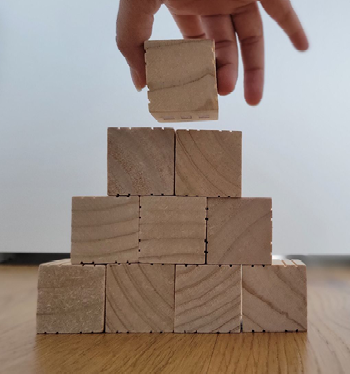
The DRK-12 program invites proposals for six project types: (1) Exploratory, (2) Design and Development, (3) Impact, (4) Implementation and Improvement, (5) Syntheses, and (6) Conferences. Exploratory research is at the beginning of the evidence building continuum, establishing the basis and development of an intervention. This research explores relationships between an intervention’s design features and learning outcomes. NSF receives fewer Exploratory proposals than, for instance, Design and Development proposals, and the opportunity that this project type offers may be opaque to many, especially early career researchers.
This Spotlight features descriptions of DRK-12-funded Exploratory projects and projects that have built on a previously funded Exploratory project, and a blog with more information about this project type, including how it is different from Early-Concept Grants for Exploratory Research (EAGER).
- Tips for Designing and Implementing Exploratory DRK-12 Projects | Blog Post by CADRE
- Featured Exploratory Projects:
- Building Environmental and Educational Technology Competence and Leadership Among Educators: An Exploration in Virtual Reality Professional Development (PI: Nastassia Jones)
- Building Students' Data Literacy Through the Co-design of Curriculum by Mathematics and Art Teachers (Collaborative Research: Matuk) (PI: Camillia Matuk)
- Co-Learning Math Teaching Project: Collaborative Structures to Support Learning to Teach Across the Professional Teaching Continuum (PI: Ruth Heaton)
- Developing Pre-service Teachers' Capacity to Teach Students with Learning Disabilities in Algebra I (PI: Casey Hord)
- Enhancing Energy Literacy Through Place-based Learning: Using the School Building to Link Energy Use with Earth Systems (PI: Laura Zangori)
- Fostering Equitable Groupwork to Promote Conceptual Mathematics Learning (PI: Anna DeJarnette)
- Incorporating Professional Science Writing into High School STEM Research Projects (PI: Sarah Fankhauser)
- Reasoning Language for Teaching Secondary Algebra (PI: Cody Patterson)
- Featured Projects Built on Exploratory Research:
Blog
Tips for Designing and Implementing Exploratory DRK-12 Projects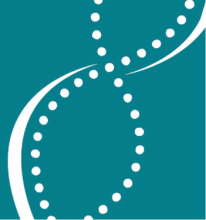
CADRE
Exploratory research is at the beginning of the evidence-building continuum. Mike Steele, the current DRK-12 program lead, describes Exploratory projects as research to “establish the basis and development of an intervention. They explore relationships between design features and outcomes and must have a conceptual framework or theory of action grounded in the literature. Exploratory projects need to provide some evidence of factors associated with learning outcomes.”
The DRK-12 program receives fewer Exploratory proposals than, for instance, Design and Development types, even though the former type of project and research may be particularly well suited for early career researchers. Guidance on this type of proposal is available in the DRK-12 program solicitation. The DRK-12 Exploratory Study project type is consistent with the descriptions and examples of Early Stages and Exploratory types of research and development in the Common Guidelines for Educational Research and Development. For more information about EArly-Concept Grants for Exploratory Research (EAGER) funding and how it differs from Exploratory proposals to specific funding programs such as DRK-12, read below.
Tips from DRK-12 awardees of Exploratory project type grants
CADRE asked recent awardees of Exploratory grants what advice they have for researchers who may be considering submitting this type of proposal. Here’s what they had to say:
“Write an Exploratory proposal that captures the innovative ideas of your dreams and don't be discouraged if it is not funded the first time. Critically review any feedback and try again!”...
Featured Exploratory Projects
Building Environmental and Educational Technology Competence and Leadership Among Educators: An Exploration in Virtual Reality Professional Development
PI: Nastassia Jones
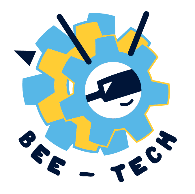 Louisiana’s wetlands are among our nation’s most vulnerable environments that are heavily impacted by both climate change via rising sea levels as well as humans through land development and industrialization. Focusing on these threatened natural environments and their connection to flooding puts STEM concepts in a real-world context that is relatable to students living in these areas, while integrating virtual reality (VR) technology allows students in rural and urban schools lacking resources for field trips to be immersed into simulated field experiences. This Exploratory project, BEE-Tech, supports the professional growth and development of current middle and high school STEM teachers by providing multiyear summer training and school year support around three specific areas: (1) environmental sciences themed content; (2) VR activities in the classroom; and (3) action research projects to evaluate classroom impact.
Louisiana’s wetlands are among our nation’s most vulnerable environments that are heavily impacted by both climate change via rising sea levels as well as humans through land development and industrialization. Focusing on these threatened natural environments and their connection to flooding puts STEM concepts in a real-world context that is relatable to students living in these areas, while integrating virtual reality (VR) technology allows students in rural and urban schools lacking resources for field trips to be immersed into simulated field experiences. This Exploratory project, BEE-Tech, supports the professional growth and development of current middle and high school STEM teachers by providing multiyear summer training and school year support around three specific areas: (1) environmental sciences themed content; (2) VR activities in the classroom; and (3) action research projects to evaluate classroom impact.
BEE-Tech seeks to expand the understanding of the impact that a multi-layered professional development program will have on improving the self-efficacy, instructional practices, and technological competence of teachers in STEM. We provide instructional support and PD for two cohorts of 10 teachers in southeastern Louisiana. During the summer, teachers complete a two-week blended learning PD training, and during the academic year, teachers participate in an action research community including PD meetings and monthly Critical Friends Group meetings. Findings from this project will advance the knowledge of the most effective components in professional development for teachers to incorporate new knowledge into their classrooms, leading to the improved design and development of PD for in-service teachers. Ultimately, we seek to improve the understanding of how innovative place-based technological experiences can be brought into classrooms and shared through public engagement.
Building Students' Data Literacy through the Co-design of Curriculum by Mathematics and Art Teachers (Collaborative Research: Matuk)
PI: Camillia Matuk
 Data literacy is important for all members of society. However, most efforts to promote data literacy are narrowly grounded in mathematics, which can miss opportunities for diverse youth to engage meaningfully with data. This project explores two questions: (1) How can we build capacity for cross-domain teachers to design art-integrated approaches to data literacy? and (2) What kinds of learning experiences successfully integrate art and mathematics approaches to build middle school students’ data literacy? We partnered with math and arts teachers to co-design and support the implementation of data literacy units that use arts-based approaches to inquiry. Research on our resulting units—which explored dance, photography, collage, comics and language arts—has begun to reveal the affordances of different artforms for supporting data literacy and reasoning, as well as the obstacles to realizing these affordances within the constraints of school contexts. This project contributes to understanding approaches to, and outcomes of, arts-integrated data literacy curriculum design.
Data literacy is important for all members of society. However, most efforts to promote data literacy are narrowly grounded in mathematics, which can miss opportunities for diverse youth to engage meaningfully with data. This project explores two questions: (1) How can we build capacity for cross-domain teachers to design art-integrated approaches to data literacy? and (2) What kinds of learning experiences successfully integrate art and mathematics approaches to build middle school students’ data literacy? We partnered with math and arts teachers to co-design and support the implementation of data literacy units that use arts-based approaches to inquiry. Research on our resulting units—which explored dance, photography, collage, comics and language arts—has begun to reveal the affordances of different artforms for supporting data literacy and reasoning, as well as the obstacles to realizing these affordances within the constraints of school contexts. This project contributes to understanding approaches to, and outcomes of, arts-integrated data literacy curriculum design.
Co-Learning Math Teaching Project: Collaborative Structures to Support Learning to Teach Across the Professional Teaching Continuum
PI: Ruth Heaton
 Preparing and supporting teachers in continually implementing ambitious, equity-oriented mathematics instruction is an enduring and critical challenge in mathematics education. Given this challenge, this design research study investigates how the field experience can be a productive site for teacher candidates and mentor teachers to collaboratively learn (i.e., co-learn) equity-oriented mathematics instruction. To do this, the project team is iteratively designing tools, referred to as “Collaborative Learning Structures.” These tools support teacher candidates and mentor teachers in interrogating aspects of their students’ mathematical justifications and generalizations, participation patterns, and collective learning to find new ways of drawing on their students’ assets, eliciting non-dominant forms of mathematics competence, establishing equitable participation norms that position all students as capable, and dismantling classroom power structures that impede their students’ success. The tools also aim to guide teachers in working together in ways that center students’ experiences and perspectives, minimize the power dynamics between the teachers, draw on the assets of both teachers, and support the teachers in developing the humble and vulnerable stance required of lifelong teacher learners.
Preparing and supporting teachers in continually implementing ambitious, equity-oriented mathematics instruction is an enduring and critical challenge in mathematics education. Given this challenge, this design research study investigates how the field experience can be a productive site for teacher candidates and mentor teachers to collaboratively learn (i.e., co-learn) equity-oriented mathematics instruction. To do this, the project team is iteratively designing tools, referred to as “Collaborative Learning Structures.” These tools support teacher candidates and mentor teachers in interrogating aspects of their students’ mathematical justifications and generalizations, participation patterns, and collective learning to find new ways of drawing on their students’ assets, eliciting non-dominant forms of mathematics competence, establishing equitable participation norms that position all students as capable, and dismantling classroom power structures that impede their students’ success. The tools also aim to guide teachers in working together in ways that center students’ experiences and perspectives, minimize the power dynamics between the teachers, draw on the assets of both teachers, and support the teachers in developing the humble and vulnerable stance required of lifelong teacher learners.
This Exploratory project has two research questions. First, how do pre-service teachers and cooperating teachers co-learn? More specifically, what vision, dispositions, understandings and practices of equity-oriented justification and generalization does each teacher develop during their time together? How does each teacher's vision, dispositions, understandings, and practices of mathematics teaching shift during their time together? Second, what are the design characteristics of the Collaborative Learning Structures that support or inhibit teachers co- learning? The project team includes mathematics education scholars from multiple institutions. Over the course of three years, the Collaborative Learning Structures will be piloted in nine teacher education programs that vary in terms of teacher population, program size, location, and length of field placement. Based on what tool users do and how they engage in the process of co-learning while using the tools, the tools will be iteratively revised (on a yearly basis). The participants include the teacher candidates, mentor teachers, and teacher educators focusing on math education in each program. Qualitative data for this study will include video recordings, observational notes, and interviews capturing the teacher candidates and mentor teachers use of the tools as well as artifacts they generate and reference while using the tools. Data will also include a pre/post questionnaire eliciting the teachers’ views, understanding, and practices of co-learning and equity-oriented justification and generalization math teaching practices, as well as interviews with the teacher educators in each program describing key features of the participants and context of the program, how the tools are used in each program, and how the tools are used in relation to the goals of the program. Data analysis will occur iteratively throughout the project to describe the teacher co-learning (in terms of shifts in their vision, dispositions, understandings and practices of equity-oriented justification and generalization) as well as characteristics of the tools that support or inhibit the teachers’ co-learning.
Developing Pre-Service Teachers' Capacity to Teach Students with Learning Disabilities in Algebra I
PI: Casey Hord
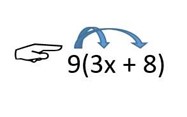 Project researchers are training pre-service teachers to tutor students with learning disabilities in Algebra 1, combining principles from special education, mathematics education, and cognitive psychology. The trainings emphasize the use of gestures and strategic questioning to support students with learning disabilities and to build students’ understanding in Algebra 1. These trainings will prepare tutors to address the challenges that students with learning disabilities often face—especially challenges related to working memory and processing—and to build on students’ strengths as they engage with Algebra 1.
Project researchers are training pre-service teachers to tutor students with learning disabilities in Algebra 1, combining principles from special education, mathematics education, and cognitive psychology. The trainings emphasize the use of gestures and strategic questioning to support students with learning disabilities and to build students’ understanding in Algebra 1. These trainings will prepare tutors to address the challenges that students with learning disabilities often face—especially challenges related to working memory and processing—and to build on students’ strengths as they engage with Algebra 1.
Our project is designed to lay the groundwork for larger-scale tutoring programs that prepare pre-service teachers and provide extra instruction for students in classes such as Algebra 1. Many of the principles of our work, including program structure and instructional strategies, could be applied to different academic subjects and grade levels.
Enhancing Energy Literacy through Place-based Learning: Using the School Building to Link Energy Use with Earth Systems
PI: Laura Zangori
We are an interdisciplinary team with expertise in science education and sustainable architecture. In our NSF Level 1 Exploratory Study, we used a pre-existing NSF funded project - Outline for a Green Schools Curriculum Unit Outline (AAAS, 2015) - to build an innovative place-based middle school (MS) science unit that uses building design concepts to teach energy ideas. Our unit, Energy and Your Environment (EYE) increases middle school students’ energy and conservation literacy through exploring energy flow within their school building. The place-based nature of the unit provides all students, regardless of geography or resources, an accessible and familiar environment to explore and expand their understanding of often-abstract energy concepts. It also provides a means for students to explore the relationship between energy consumption and carbon emissions from their school building.
The 4-module EYE unit weaves engineering design throughout which culminates in student teams constructing an energy efficient one-room building using the knowledge they have gained about light energy and thermal energy. After student teams make their design choices, they construct cardboard prototypes and test their one-room building in the schoolyard. The engineering design decision-making process is supported by game cards and an interactive digital tool that reveals the financial and ecological impacts of students’ design choices.
EYE has been taught by six middle school teachers across four different middle schools, reaching approximately 400 students. In addition, EYE established the basis for us to propose a Level 2 Early Stage Design and Development of a STEM educational innovation called Build It Green! (BIG!). In BIG!, the ideas within EYE will be expanded into the digital realm so that students will be able to virtually explore energy flow within a school building. Engineering design prototype and testing will occur virtually so students can determine how their engineering design choices immediately impact energy flow in the present as well as project 30 years in the future to examine the long-term impacts of their energy conscious designs.
Fostering Equitable Groupwork to Promote Conceptual Mathematics Learning
PI: Anna DeJarnette
There is a strong tradition of incorporating and studying groupwork in mathematics classrooms, as well as in other STEM learning spaces. A primary value of groupwork is in the opportunity it creates for collaborative learning among students, and collaboration is generally understood to reflect equitable distribution of participation and contribution to a group. One area in which there is still much to be learned is how students conceive of collaboration and what—from students’ perspectives—constitutes fairness and equity in the context of groupwork. The purpose of this project is to document the types of interactions and relationships that are affirming to students’ mathematics learning, in order to define collaboration in a way that prioritizes students’ ideas and identities. In service of that goal, we have worked with a partner middle-grades math teacher to implement a research-based intervention (i.e., Complex Instruction) to facilitate interpersonal strategies and mindsets that are conducive to working in groups. Because teaching students to work productively in groups remains so challenging, it is clear that there is opportunity to benefit from greater understanding of what students prioritize and value. Therefore, this project should provide a basis for future interventions to support students’ groupwork. Most importantly, this work should provide a humanizing, asset-based perspective from which to analyze and understanding middle-grades students’ classroom interactions.
Incorporating Professional Science Writing into High School STEM Research Projects
PI: Sarah Fankhauser
 Publish or perish? Publication is a cornerstone to the construction and dissemination of scientific knowledge. A publication is the product of reading, writing, peer-review, and revision, and these practices are essential to the work of being a scientist. Although critical to science, these practices are rarely part of the middle or high school student science research experience. The Journal of Emerging Investigators (JEI) is a science journal dedicated to mentoring middle and high school students through the peer-review and publication of their STEM research projects. Students who submit their research papers to JEI are provided constructive feedback about their science and communication from 3-4 expert reviewers in the field.
Publish or perish? Publication is a cornerstone to the construction and dissemination of scientific knowledge. A publication is the product of reading, writing, peer-review, and revision, and these practices are essential to the work of being a scientist. Although critical to science, these practices are rarely part of the middle or high school student science research experience. The Journal of Emerging Investigators (JEI) is a science journal dedicated to mentoring middle and high school students through the peer-review and publication of their STEM research projects. Students who submit their research papers to JEI are provided constructive feedback about their science and communication from 3-4 expert reviewers in the field.
For the students who publish with JEI, what do they gain from the experience? How might participation in such an authentic experience impact a student's understanding of science and their role within the scientific community? These are the questions that are the basis of our current research efforts. Through interviews and survey analysis, we have revealed that students who participate in publication of their papers with JEI report gains across several measures, including their confidence, self-efficacy, and identity in STEM.
Our results suggest that participation in such authentic experiences can have meaningful impact on student identity in STEM, which we know is an important component to retention in the sciences. Furthermore, our research is the basis for a future Design and Development proposal that will focus on designing teacher professional development and curriculum to incorporate this type of communication practice in the classroom.
Reasoning Language for Teaching Secondary Algebra
PI: Cody Patterson
Our project, Reasoning Language for Teaching Secondary Algebra (ReLaTe-SA), investigates how middle and high school teachers use mathematical language and reasoning to help students understand algebraic concepts. We know that most secondary mathematics teachers have at least an undergraduate degree in a STEM field, so probably have had some success with the ideas and problem-solving strategies of high school algebra. However, we also know that many students have difficulty gaining sufficient mastery of algebraic concepts and procedures to pass Texas’ standardized end-of-course exam for Algebra 1. Our project investigates the possibility that the problem is not one primarily of teacher knowledge, but of the discourse that evolves in many algebra classrooms. In our view, the important question is not whether teachers understand the conceptual foundations of what they teach in algebra classes; the evidence we have gathered so far suggests that they understand the subject matter of high school algebra in deep and versatile ways. We believe the important question is whether students experience algebra as a subject in which important ideas are “handed down” from an external authority, or as one in which they have the agency and opportunity to discover important ideas and find connections among them.
To investigate this question, we have created a Survey of Algebraic Language and Reasoning that contains about 15 open-ended items that ask teachers how they think about certain conceptual issues that commonly arise in Algebra I. We have also developed an 80-hour Algebraic Reasoning Workshop in which mathematics education researchers and secondary teachers learn from each other’s experiences; we explore reasoning-rich algebra tasks from both learner and teacher perspectives, and work together to develop original lessons that provide students with opportunities to engage in algebraic reasoning and discussion. Our hope is that the workshop activities we have designed in this Exploratory project will help others who provide professional development think in novel ways about how to draw out teachers’ authentic beliefs and experiences, both mathematically and pedagogically, and invite teachers into productive collaboration.
Featured Projects Built on Exploratory Research
Developing and Investigating Unscripted Mathematics Videos
PI: Joanne Lobato
 The Developing and Investigating Unscripted Mathematics Videos project (which we refer to as Project MathTalk), responds to the increased interest in and need for high-quality online instructional videos for STEM learning. However, currently-available videos tend to focus on providing clear explanations of procedural content rather than addressing common student difficulties through problem solving and argumentation. Furthermore the absence of student dialogue severely limits learning opportunities. Consequently, in a previous DRK-12 Exploratory grant, we created an alternative model for online instructional videos. Instead of a talking head or hand demonstrating step-by-step procedures, our videos feature pairs of students in unscripted dialogue, working together to tackle novel math problems, resolve conceptual challenges, and develop mathematical meaning. In our current grant (a late stage Design and Development DRK-12 grant), we are developing six additional video units (each unit contains about 40 short videos), which use the format and processes developed for the two prototype video units from the Exploratory grant. These dialogic videos are housed on our project website: www.mathtalk.org. Although the current grant targets important Algebra 1 and 2 topics for high school and upper middle school students, the alternative video model can be applied to the development of online videos for any STEM topic, at any age level. A series of research studies investigates what and how other students (called vicarious learners) learn from the videos by participating indirectly in the conversations of their peers (called the talent). See project products.
The Developing and Investigating Unscripted Mathematics Videos project (which we refer to as Project MathTalk), responds to the increased interest in and need for high-quality online instructional videos for STEM learning. However, currently-available videos tend to focus on providing clear explanations of procedural content rather than addressing common student difficulties through problem solving and argumentation. Furthermore the absence of student dialogue severely limits learning opportunities. Consequently, in a previous DRK-12 Exploratory grant, we created an alternative model for online instructional videos. Instead of a talking head or hand demonstrating step-by-step procedures, our videos feature pairs of students in unscripted dialogue, working together to tackle novel math problems, resolve conceptual challenges, and develop mathematical meaning. In our current grant (a late stage Design and Development DRK-12 grant), we are developing six additional video units (each unit contains about 40 short videos), which use the format and processes developed for the two prototype video units from the Exploratory grant. These dialogic videos are housed on our project website: www.mathtalk.org. Although the current grant targets important Algebra 1 and 2 topics for high school and upper middle school students, the alternative video model can be applied to the development of online videos for any STEM topic, at any age level. A series of research studies investigates what and how other students (called vicarious learners) learn from the videos by participating indirectly in the conversations of their peers (called the talent). See project products.
How did this project build on an Exploratory DRK-12 grant?
Exploratory grants are wonderful for investigating a proof-of-concept. In particular, they allow researchers the freedom to focus test and refine early versions of a design innovation. For example, initially we didn’t know if students could learn anything from our videos. In particular, we thought that the confusion expressed by the talent could be overwhelming for vicarious learners. But we found that was rarely the case during our focus tests and research studies. Instead, seeing peers express confusion helped vicarious learners feel part of a community of learners, and seeing the talent resolve their confusion helped the vicarious learners trust the talent and learn from them.
Building on an Exploratory grant also affords the use of previously-developed processes. Specifically, we spent six months developing, testing, and refining prototypes before we settled on how we wanted to both film and conduct video post-production (editing, annotating, and creating voiced-over summaries). For the current grant, we could simply use those processes. This freed us up to create additional videos and to conduct more research.
Finally, Exploratory grants support early-stage discovery research (versus later-stage verification research). For example, under the Exploratory grant, we investigated how vicarious learners oriented to the talent in the videos, and we identified qualitatively different ways in which vicarious learners approached the research sessions in which they were asked to view dialogic videos and solve related math tasks. In the current grant, we are focusing on what and how vicarious learners learn from the videos, and we are scaling up from small n, after-school studies to classroom-based studies of 35-40 students. While the goal of our Exploratory grant was to explore the potential promise of an alternative model of online math videos, the goal of our current grant is to provide evidence of the efficacy of these unscripted dialogic videos with a larger, more diverse population and for a wider range of topics than what marked the Exploratory grant.
Doing the Math with Paraeducators: Enhancing and Expanding and Sustaining a Professional Development Model in PreK to Grade 3 Math Classrooms
PI: Judy Storeygard
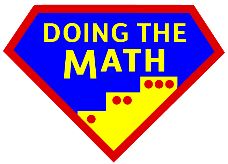 Addressing mathematics professional development (PD) needs of PreK-3 paraeducators is critical, as their numbers continue to rise, and their duties expand beyond routine and clerical tasks. Paras often provide academic support in early math skills, which can be powerful predictors of academic achievement for students.
Addressing mathematics professional development (PD) needs of PreK-3 paraeducators is critical, as their numbers continue to rise, and their duties expand beyond routine and clerical tasks. Paras often provide academic support in early math skills, which can be powerful predictors of academic achievement for students.
Prior Work: Our Exploratory Doing the Math project staff developed and tested a PD model, responsive to paras’ working in a diverse urban district. Results of the twenty-three participants showed increased confidence and involvement in math instruction, greater facility using inquiry-based math resources, and improved strategies for supporting student thinking and addressing math learning challenges. Overall, there was a notable shift as paras moved from a monitoring role to an educator role, indicating the potential for opening pathways to teaching for these educators and diversifying the teaching pool. This Exploratory research resulted in a proof of concept, with a PD model that is ready for testing in a wider range settings and school districts.
Enhancing and Empowering: Doing the Math builds on that Exploratory work by:
- expanding the participant cohort to include PreK paraeducators;
- providing PD to math facilitators to support implementation;
- revising the structure of PD by offering school-based sessions to build a school community of learners;
- adding teacher PD to foster collaboration with paras; and
- expanding our measures via a longitudinal study.
We will collaborate with paraeducators in two diverse urban districts, studying how well the project creates professional learning communities, influences para instructional practice, and develops para-mentors and teachers who support their colleagues. Our outcomes research will measure the impact on paraeducators’ confidence, mathematics pedagogical content knowledge, and teaching efficacy. Findings will identify pathways that support para entry into teaching and leadership roles.
It is our belief that providing paraeducators with access to sustained PD and opportunities that open pathways to teaching can diversify the teaching pool and address the critical teacher shortage that disproportionately affects high-need urban schools.